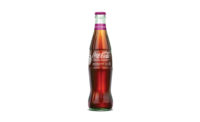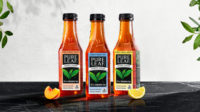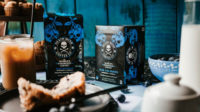2022 State of the Beverage Industry | Carbonated soft drink market shifts gears

As the carbonated soft drink (CSD) market faces increased consumer demand for functional beverages, CSD production is expected to rise by continuing to develop new products that offer healthier ingredients, as well as new taste innovations.
Yet, as the pandemic-enforced reduction in out-of-home consumption has posed challenges for the CSD category, brands are experimenting to find the right balance between health and indulgence, experts note.
As demand for soft drinks have tempered, following the surge in 2020, soft drink production revenue is estimated to have declined in 2021, noted Jacqueline Hiner senior technical analyst at New York-based IBISWorld, in Beverage Industry’s April eMagazine.
“Despite this downward trajectory, there has been an increased demand for functional beverages, rather than more traditional sodas with flavor syrups,” Hiner explained. “Instead, consumers have increasingly opted for beverages with key beneficial ingredients, such as collagen, probiotics, or beverages that are sweetened with fruit juice rather than artificial sweeteners.”
According to Chicago-based Information Resources Inc. (IRI), carbonated beverage sales were up 9.7% totaling $35.1 billion for the 52 weeks ending May 15, in total U.S. multi-outlets.

Additionally, consumers are much more aware of the ingredients used in diet beverages, which often are artificial, IBIS’s Hiner noted. “In turn, consumers have shifted toward low-calorie sweeteners that have additional health benefits such as monk fruit, stevia or small quantities of fruit juice, driving a shift in CSD production,” she explained.
Hoboken, N.J.-based Green Cola North America LLC kicked off the year with the launch of its Green Cola and Green Sparkling sodas at more than 1,000 retailers in the United States as well as Amazon and Walmart.com. Green Cola combines the taste of cola without any sugar, calories, artificial sweeteners and preservatives, the company notes. Naturally sweetened with stevia, the original Green Cola sources its caffeine from unroasted coffee beans, which are with antioxidants, the company says. Meanwhile, the Green Sparkling sodas are all-natural, sweetened with stevia, contain up to 10% real fruit juice, and have no added sugar and no caffeine, it adds.
With the pandemic, as changes to daily routines including working and learning from home have created new opportunities for packaged CSDs, brands also have leaned into innovation to help sustain this momentum, according to Chicago-based Mintel’s “US Carbonated Soft Drinks Market Report 2021.”
“Even before the pandemic, as the largest non-alcoholic beverage category, CSDs were showing signs of renewal, finding modest growth that has topped $39 billion,” the report states. “This growth was largely fueled by innovation that worked to lessen a not so healthy reputation.
“Still, the hallmarks of the category reflect its dominance and its growth in 2020: products that deliver on enjoyment, refreshment and nostalgia,” it continues. “Despite a competitive non-alcoholic beverage landscape, the power of brands and the dedication of consumers is clear: more than half of U.S. adults consume CSDs multiple times weekly or more.”

Image courtesy of Green Cola North America LLC
To further engage consumers, Atlanta-based The Coca-Cola Co. unveiled its new global innovation platform Coca-Cola Creations. Developed under the “Real Magic” brand platform, Coca-Cola Creations was revealed in late 2021. Coca-Cola Creations will take the iconic Coca-Cola trademark and lend it to new expressions, driven by collaboration, creativity and cultural connections, the company says. Through limited-edition, sequential releases, Coca-Cola Creations will introduce new products and experiences across physical and digital worlds, it adds.
In February, Purchase, N.Y.-based PepsiCo launched its newest innovation: Nitro Pepsi. Nitro Pepsi is a nitrogen-infused cola that’s actually softer than a soft drink ― it's creamy, smooth and has a cascade of tiny bubbles topped off by a frothy foam head, the company says. This is the first time this type of widget technology, often seen in beer and coffee products, is being applied to the cola category, it adds.
However, analysts don’t expect innovations to shift the breakdown of CSD flavor share much in the next few years. In a report from New York-based Beverage Marketing Corporation (BMC) titled “Carbonated Soft Drinks in the U.S. through 2025: Market Essentials,” the market research firm expects that cola will continue to lose volume through 2025 ― with a projected 49.4% share ― while pepper will ascend to the second (11.8%) upending heavy citrus (11.3%).
As the CSD category still faces some headwinds, innovation that bridges the gap between consumer interest in well-being and indulgence is key to growing the market, experts note.
Gary Hemphill, managing director at BMC, noted in Beverage Industry’s April eMagazine, that as brands continue to reassure consumers about sugar content, taste is equally important.
Further, as flavor innovation has long been a means to boost sales in the CSD category, taste improvements in diet CSDs and improved marketing has helped to boost the category’s performance, Hemphill said.
Still, an overall challenge with flavor innovations is to develop sustainably successful new flavors, according to BMC’s Hemphill. “All too often flavor innovation in CSDs has resulted in a boom-bust phenomenon whereas a new flavor may result in strong sales its first year, but fall flat thereafter,” he said, in Beverage Industry’s April eMagazine.
Nevertheless, as the overall CSD market continues on the functional beverage trend; new innovations are a way of making the category more relevant to today’s consumers, Hemphill concluded.
Looking for a reprint of this article?
From high-res PDFs to custom plaques, order your copy today!







